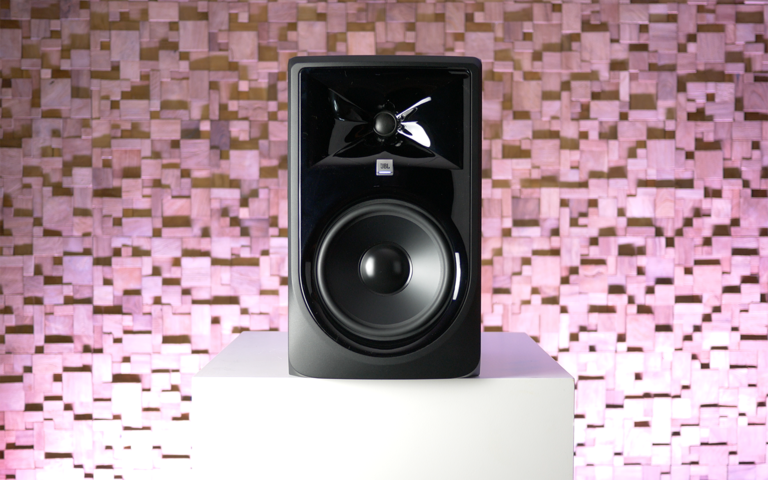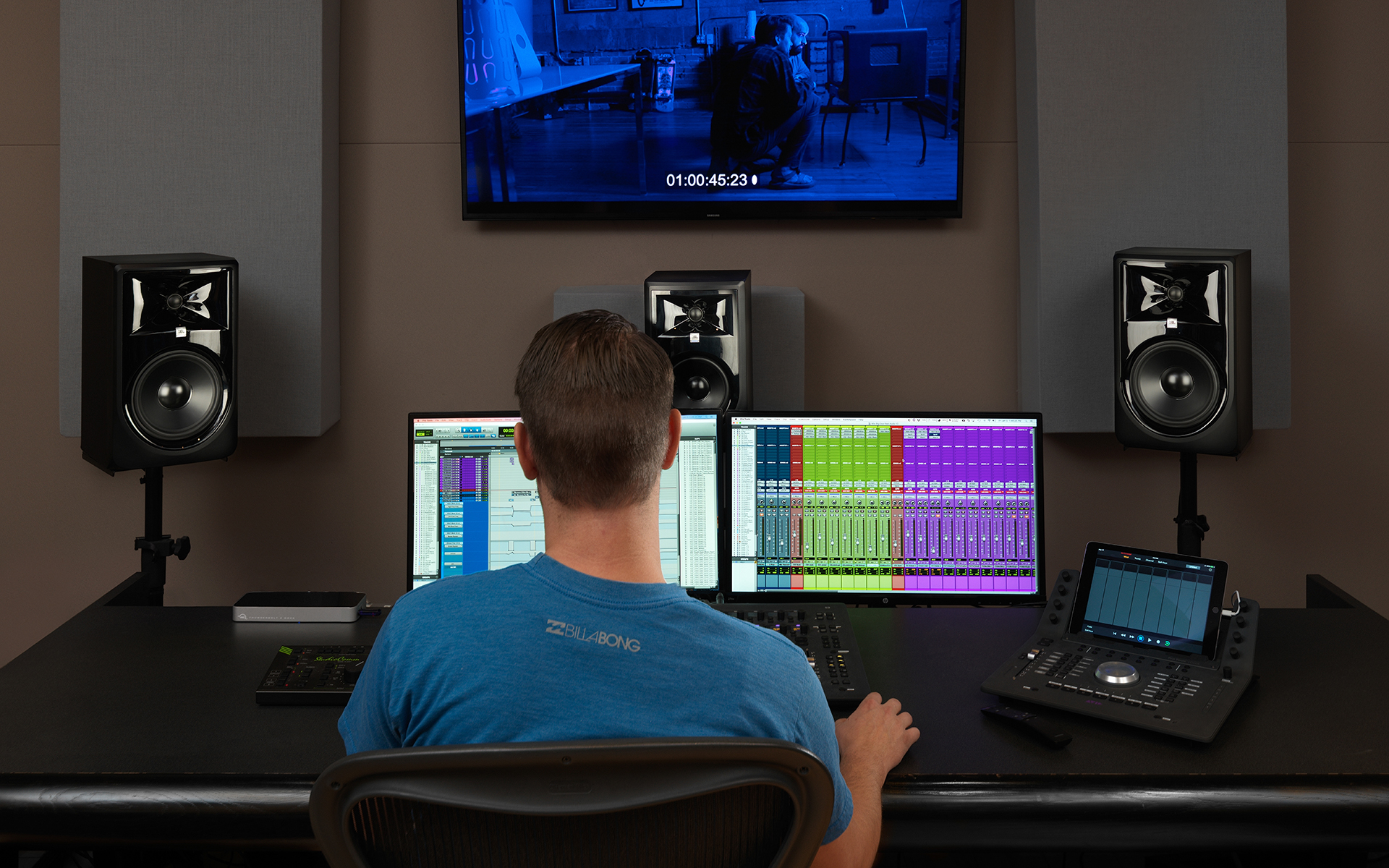

JBL has dedicated years of research into developing the perfect image control waveguide, and the fruit of all of that effort came in the shape of the M2 master reference monitor - JBL’s flagship studio monitoring system. Weighing in at over 58 kg per speaker, the M2’s are big in size, and - most importantly - impeccable in sound. The M2’s party piece is its unique image control waveguide that was developed specifically to create an acoustically seamless transition between the low-frequency and high-frequency transducers and deliver remarkable imaging and natural balance at nearly any listening position in a broad range of acoustic environments.
In the same way automotive industries develop their ‘concept cars’, the groundbreaking waveguide technology developed for the JBL M2’s has been filtered into 3 products; the JBL 305P MkII, 306P MkII and 308P MkII.

The 3 series MkII’s are an evolution of the critically acclaimed MkI’s and feature refined transducers, improved cabinet design and construction, as well as the patented waveguide technology developed for the M2’s. The advantage of employing such a revolutionary waveguide technology onto a relatively small near-field monitor is that the high-frequency delivery is neutral throughout an extremely wide ‘sweet-spot’ to provide a more forgiving and room-friendly listening position in a wider variety of environments. Earning ‘Linear Spatial Reference’ status is no mean feat. In order for JBL to place that name on a studio monitor, the 3 Series MkII’s had to pass the most stringent tests. 72 individual measurements were taken at 360 degrees around the monitor and those measurements were analysed and approved by JBL to ensure that they were happy with the horizontal and vertical coverage provided by the waveguide. This LSR status means that the listener can hear the full, detailed stereo image regardless of the physical constraints of the studio environment. Considering most home studios are untreated spaces, choosing a studio monitor - like the 3 Series MkII’s - that can perform in these challenging environments could be the difference between good mixes, and amazing mixes.
Picking a studio monitor that fits the dimensions of your room is a very difficult task. Pick a monitor too small and you’ll find yourself running it flat-out in order to reach your desired volume; pick a monitor too big and you’ll overload your room with low frequencies and you’ll be susceptible to room nodes - you’re also more likely to annoy your neighbours!
In typical ‘goldilocks’ fashion, 5” studio monitors are typically found to need low-end reinforcement from a subwoofer, whereas 8” drivers are often found to provide a “looser” low-end that can be overwhelming in smaller rooms. Whilst the 3 Series dispels the usual misgivings with their 5 and 8” offerings, a medium-ground ‘just-right’ option was required - please welcome the 306P MkII.
A 6” driver offers the perfect middle ground between tight, punchy bass response and enough low-end extension for accurate monitoring in small to medium sized rooms - where the 8” version will be too overbearing and the 5” version does not provide enough ‘oomph’.

Developing speakers that provide a flat frequency response in an anechoic chamber is easy - making that same speaker perform in a square, reflective room is not. As more and more musicians are building their own studios in the far corners of their homes, JBL has introduced boundary compensation to the 3 Series MkII monitors to ensure that their design performs in a wider range of challenging acoustic spaces. The new Boundary EQ attenuates the low-end boost that can occur when you place monitors directly on a desktop or near walls and corners. The 3-position HF trim switch allows you to adjust the high-frequency response of the monitors to tailor them to room acoustics (in a particularly dead space) or to simply adjust to personal taste.
The revised rear panel also offers an abundance of connectivity and input sensitivity options that enables the 3 Series MkII monitors to match-up to any possible audio interface/studio setup whilst maintaining impeccable signal integrity. Adjustable +4dBu/-10dBV input sensitivity allows the 3 Series to be connected to professional or consumer line outputs, whilst balanced XLR and TRS ¼” inputs means more music creation and less cable ordering/soldering.

All MkII monitors feature the same 3 Series transducers that made the MkI’s so critically acclaimed - albeit with some improvements on the excursion of the transducers - particularly the 8” versions. The high end is addressed using a woven-composite 1" Neodymium tweeter that provides fast HF transient response through fine-tuned ferrofluid damping. The enhanced woofer design provides greater low-frequency linearity and lower harmonic distortion with unmatched peak handling and dynamics. The patented JBL Slip Stream™ low-frequency port is perfectly tuned to enable even lower frequency extension, whilst remaining controlled, linear, and punchy.
The 3 Series MkII studio monitors are a notable step-up in quality from the already impressive and award winning MkI’s. The addition of JBL’s boundary compensation means that the MkII’s will perform at their best in an even wider array of challenging environments, whilst the subtle improvements to the driver and slipstream port add up to an even greater mixing experience. Now more than ever, your perfect mix has less places to hide.
This new blog is presented by the team at Sound Technology Ltd, a leading distributor of musical instruments and pro audio equipment in the UK and ROI.